Last Updated on 7 months
Tire Pressure Monitoring Systems (TPMS) in Modern Vehicles
That little light on your car’s dashboard tells an important story. It’s the tale of the tire pressure monitoring system (TPMS), born from a history of uncertainty about tire pressure and the severe car accidents that could have been avoided if drivers were aware of low air pressure in their tires. Nowadays, it’s surprising how many vehicles still travel with underinflated tires, but thanks to TPMS, many accidents are prevented.
Before the TPMS light became a standard vehicle feature, checking your tire pressure meant physically measuring it with a tire gauge. This was the only method available to most drivers. However, a rise in accidents caused by underinflated tires led to significant changes.
The U.S. government recognized the safety risks and passed the Transportation Recall Enhancement, Accountability, and Documentation (TREAD) Act. As a result of this legislation, most vehicles in the U.S. since 2007 have been equipped with some tire pressure monitoring system.
It’s important to note that not all TPMS are the same. There are two main types: indirect and direct TPMS. Each type has its way of monitoring tire pressure, but its ultimate goal is to alert you when your tire pressure is dangerously low. This alert is usually a yellow symbol on your dashboard, shaped like a tire cross-section with an exclamation point, signaling that it’s time to check your tires.
Understanding TPMS: Your Car’s Tire Pressure Guardian
Here’s how it works: if your tire pressure strays too far from the recommended level (usually found on that sticker on the driver’s side door), the TPMS lights up a warning on your dashboard.
It’s like having a vigilant co-pilot who always ensures your tires are in top shape. So, next time you see that indicator, know that your car is just looking out for you, ensuring you’re rolling on tires that are just right, pressure-wise!
Where’s That Tire Pressure Sensor Hiding?
In most vehicles, each wheel has a snugly fitted sensor inside the tire. It’s like a tiny guardian keeping an eye on your tire’s health. Here’s where you can find the TPMS:
- Sensor Styles Vary: Some cars have these sensors built into the tire valves – pretty neat, right? Others might place the sensor directly on the wheel’s interior. Either way, they’re there to keep track of your tire pressure.
- A Bit of History: Since the 2005 models rolled out, tire pressure monitoring systems (TPMS) have become common. By September 1, 2007, it wasn’t just an excellent add-on; it became a must-have by federal law!
- Is There a TPMS in Your Ride? Here’s a quick check – start your car and glance at the dashboard. If you see a TPMS light flick on and then off, you’ve got a TPMS onboard! It’s like a quick hello from your car’s tire pressure monitoring system.
Tire Pressure Sensors Function
The tire pressure sensor plays a vital role in a vehicle:
- The Heart of Tire Sensors: Inside each tire pressure sensor, a tiny battery powers it up. There’s also a wireless transmitter – think of it as the sensor’s way of sending messages.
- Regular Check-Ins: These sensors are like diligent little assistants, regularly checking your tire’s pressure and temperature. They then relay this info to your vehicle’s computer, keeping it in the loop.
- Energy-Saving Mode: When your car’s taking a break and not moving, these sensors smartly switch to ‘sleep mode.’ Why? To save their battery life! But don’t worry, they’re still on the job.
- Even in Sleep, They’re Working: Some tire sensors are extra vigilant. Even in sleep mode, they’ll wake up at intervals to send over updates on tire temperature and pressure. They’re saying, “Just checking in!” to your car’s computer.
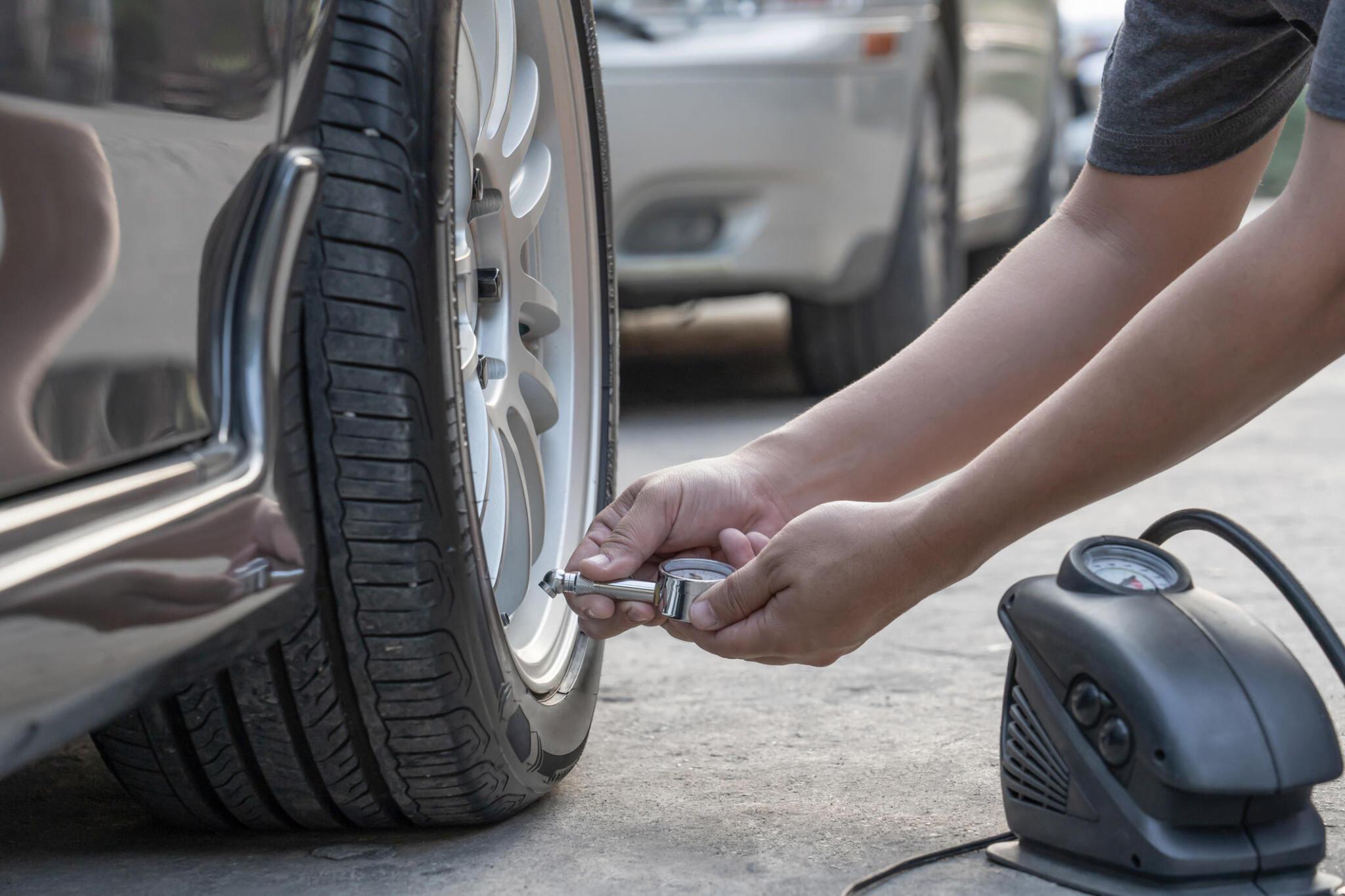
Exploring the EU’s TPMS Regulation
We will look at how the European Union’s Tire Pressure Monitoring System (TPMS) regulation, which mandates tire pressure monitoring to improve road safety and reduce environmental impact, works:
- EU Regulation Overview: The EU’s TPMS regulation, outlined in EU Regulation 661/2009, mandates the integration of Tire Pressure Monitoring Systems in new vehicles.
- Timeline for Implementation: The regulation requires all vehicles receiving type approval after November 2012, and new vehicles sold after November 2014 must be equipped with TPMS.
- Safety and Efficiency Goals: The primary objective of this regulation is to boost road safety and reduce fuel consumption across Europe.
- Impact on Vehicle Handling: TPMS plays a significant role in maintaining optimal tire pressure, which is necessary for the vehicle’s handling characteristics and overall safety.
- Longevity of Tires: Proper tire pressure, monitored by TPMS, extends the service life of tires, reducing the frequency of replacements and the associated environmental impact.
- Exemption for Older Vehicles: The regulation does not mandate retrofitting TPMS in vehicles registered before the rule.
- Fuel Consumption Reduction: By ensuring correct tire pressure, TPMS helps lower fuel consumption, as underinflated tires lead to higher fuel usage.
- EU’s Commitment to Road Safety: This regulation is part of the EU’s broader commitment to enhancing road safety standards and environmental sustainability in the automotive sector.
- Consumer Awareness and Responsibility: The regulation also underscores the importance of consumer awareness regarding vehicle maintenance and the impact of tire pressure on safety and fuel efficiency.
- Global Influence: The EU’s TPMS regulation sets a precedent for other regions, highlighting the importance of technological integration for safer and more eco-friendly driving experiences.
Why this regulation in the first place?
Well, it’s all about enhancing road safety and checking fuel consumption. It turns out that the pressure in your tires isn’t just about avoiding flats; it plays a significant role in how your vehicle handles things and affects the longevity of your tires.
By ensuring that all new cars have TPMS, the EU is steering towards safer, more fuel-efficient roads. It’s like adding an extra layer of protection and efficiency to your driving experience!
Verifying Your Vehicle’s Compliance with EU TPMS Regulations
Are you wondering if your vehicle meets the European Union’s Tire Pressure Monitoring System (TPMS) regulations? Ensuring your car is compliant for safety and regulatory reasons is essential.
Here’s a straightforward guide to help you quickly determine if your vehicle aligns with the EU’s TPMS standards:
- Vehicle Manufacture Date Check: Start by confirming when your vehicle was made. This is important as the EU TPMS regulations apply to specific manufacturing dates.
- Dashboard Warning Lights: When you start your vehicle, observe the dashboard. A dedicated TPMS symbol should briefly appear to indicate whether your car is compliant.
- TPMS Symbol Indicator: Upon ignition, a TPMS symbol on the dashboard indicates that your vehicle meets EU standards.
- System Function Check at Start-up: Each time you start the vehicle, its central processing unit performs a routine check of the TPMS.
- Quick Light-Off Sequence: If the tire pressures are correct and the system is functioning correctly, the TPMS warning light will turn off a few seconds after the vehicle starts.
- Assurance of Compliance: The brief illumination followed by the light turning off indicates that your vehicle’s pressure monitoring system complies with EU regulations.
TPMS enhances vehicle Safety and Meets EU Standards:
The Tire Pressure Monitoring System (TPMS) in vehicles is about keeping an eye on your tire pressure, a key player in reducing emissions and boosting your safety on the road. Imagine this: if your tire’s pressure dips over 20% below the vehicle’s recommended level or falls under 1.5 bar, the TPMS will alert you.
Regarding how the TPMS works, the EU regulation doesn’t play favorites between active and passive systems. A dynamic approach has separate sensors in each tire, constantly monitoring pressure, while a passive system cleverly uses your car’s ABS to gauge changes in tire rotation speed.
Whatever system your vehicle uses must tick all the boxes of the EU’s stringent requirements. The choice of system? That’s up to the vehicle manufacturers to ensure each car best fits its design and function.
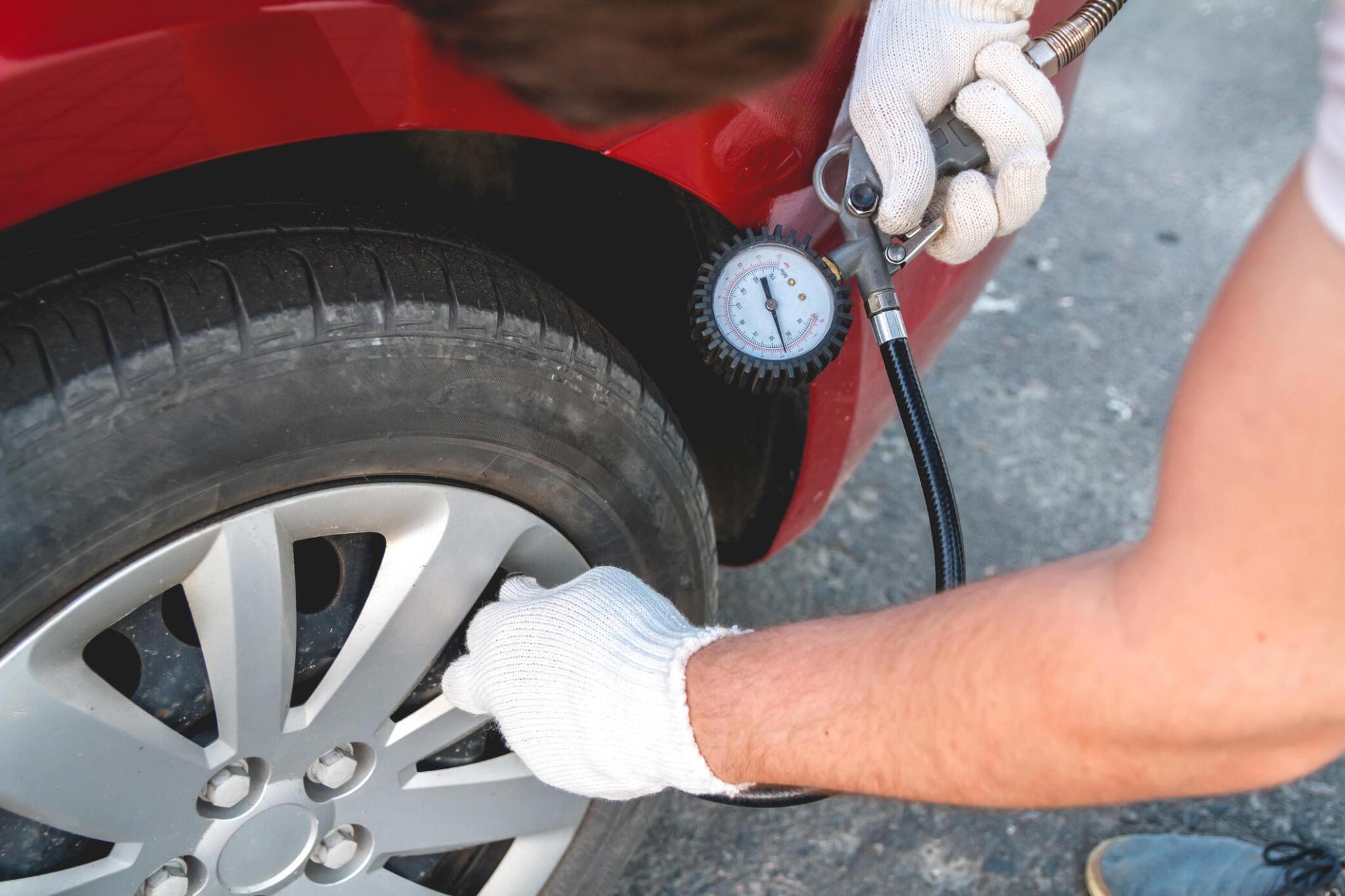
Interpreting the TPMS Light
Navigating the specifics of your vehicle’s Tire Pressure Monitoring System (TPMS) doesn’t have to be complicated. Understanding what different signals from the TPMS light mean can help you maintain your vehicle’s tires in top condition, ensuring your safety on the road.
Understanding Tire Pressure Alerts in Your Vehicle
Whether it’s a brief glow, a persistent light, or a flashing alert, each signal from the TPMS light has a specific meaning. Here’s a friendly guide to help you decode these signals, know when to check your tire pressure, and understand the importance of referring to your vehicle’s manual for accurate tire maintenance:
- Decoding the TPMS Light Signal: When you start your car, if the TPMS (Tire Pressure Monitoring System) light briefly illuminates and then turns off, it’s giving you a thumbs up – your TPMS is working just fine.
- Constant Light – A Sign of Low Pressure: If the TPMS light stays on, your car gently nags you to check your tires. This usually means one or more tires are underinflated by about 25% compared to the pressure suggested on the door placard. And don’t forget your spare tire – it deserves a check, too!
- Flashing Light – System Alert: If the TPMS light starts flashing for a minute, it signals a different kind of alert. This usually means there’s something up with the TPMS, and it’s time for a more thorough check-up.
- The Go-To Guides: For the real scoop on your vehicle’s ideal tire pressure, turn to your vehicle’s owner’s manual and the tire pressure placard inside the driver’s door jamb. They’re your best guides.
- Checking Pressure the Right Way: Remember to check your tire pressure when it is cold, as driving heats them and can alter the pressure readings. And a word of caution – the force listed on the tire is its maximum, not the recommended level for your vehicle.
Significance Of TPMS
Understanding the significance of TPMS (Tire Pressure Monitoring System) in your vehicle goes beyond just a dashboard indicator; it’s about ensuring your ride’s utmost safety and efficiency.
Tires are more than rubber on wheels; they connect your vehicle to the road. Let’s examine how the TPMS has become an indispensable part of modern vehicles, enhancing performance, safety, and fuel economy:
- The Vital Role of Tires: Tires are your vehicle’s sole contact with the road, playing a pivotal role in performance, fuel efficiency, and safety.
- Tire Pressure Fluctuations: Unlike tire wear, which is gradual, tire pressure can change daily, influencing the vehicle’s overall operation and safety.
- TREAD Act Impact: The Transportation Recall Enhancement, Accountability, and Documentation (TREAD) Act brought tire pressure monitoring into the spotlight, requiring TPMS in all passenger vehicles since September 2007.
- TPMS Origins: The journey of TPMS began in luxury vehicles, with Porsche introducing it in 1986 in the Porsche 959. Following this, brands like Peugeot, Citroen, Renault, and General Motors incorporated TPMS, initially as a luxury feature.
- Catalyst for Change: The late 1990s saw a series of tire-related accidents and recalls, notably involving Firestone tires and SUV rollovers, which highlighted the need for regular tire pressure monitoring and led to the enactment of the TREAD Act.
- From Luxury to Necessity: What started as an exclusive feature in high-end cars has evolved into a crucial safety component in today’s vehicles, underlining the importance of TPMS in maintaining tire health and vehicle safety.
Why is a Tire Pressure Monitoring System So Important?
The importance of TPMS (Tire Pressure Monitoring System) isn’t just about responding to a dashboard light – it’s about ensuring your safety and optimizing your vehicle’s performance. Let’s explore why monitoring your tire pressure through TPMS is more than just a precautionary measure and is a vital aspect of responsible vehicle ownership:
- Safety First: Underinflated tires are more susceptible to blowouts, a leading cause of losing control of your vehicle. They also reduce traction, especially in cornering, increasing the risk of accidents. In the U.S. alone, underinflated tires contribute to thousands of crashes and hundreds of fatalities annually.
- Fuel Efficiency Matters: Americans use roughly 150 billion gallons yearly, and underinflated tires waste about two billion gallons. That’s a significant loss, both environmentally and economically. Proper tire pressure can save drivers and fleet operators substantial fuel and money.
- Maximizing Tire Life: Tires with inadequate pressure wear out unevenly and faster, meaning more frequent replacements and additional expenses. Properly inflated tires can double the lifespan of your tires, ensuring you get the most out of your investment.
- Enhanced Ride Quality: Your vehicle’s tire pressure is a crucial steering and suspension component. While shock absorbers handle the big bumps, tire pressure is responsible for smoothing out the smaller ones, contributing to a stable and comfortable ride. Lower tire pressure can lead to a softer but less stable driving experience, impacting directional stability.
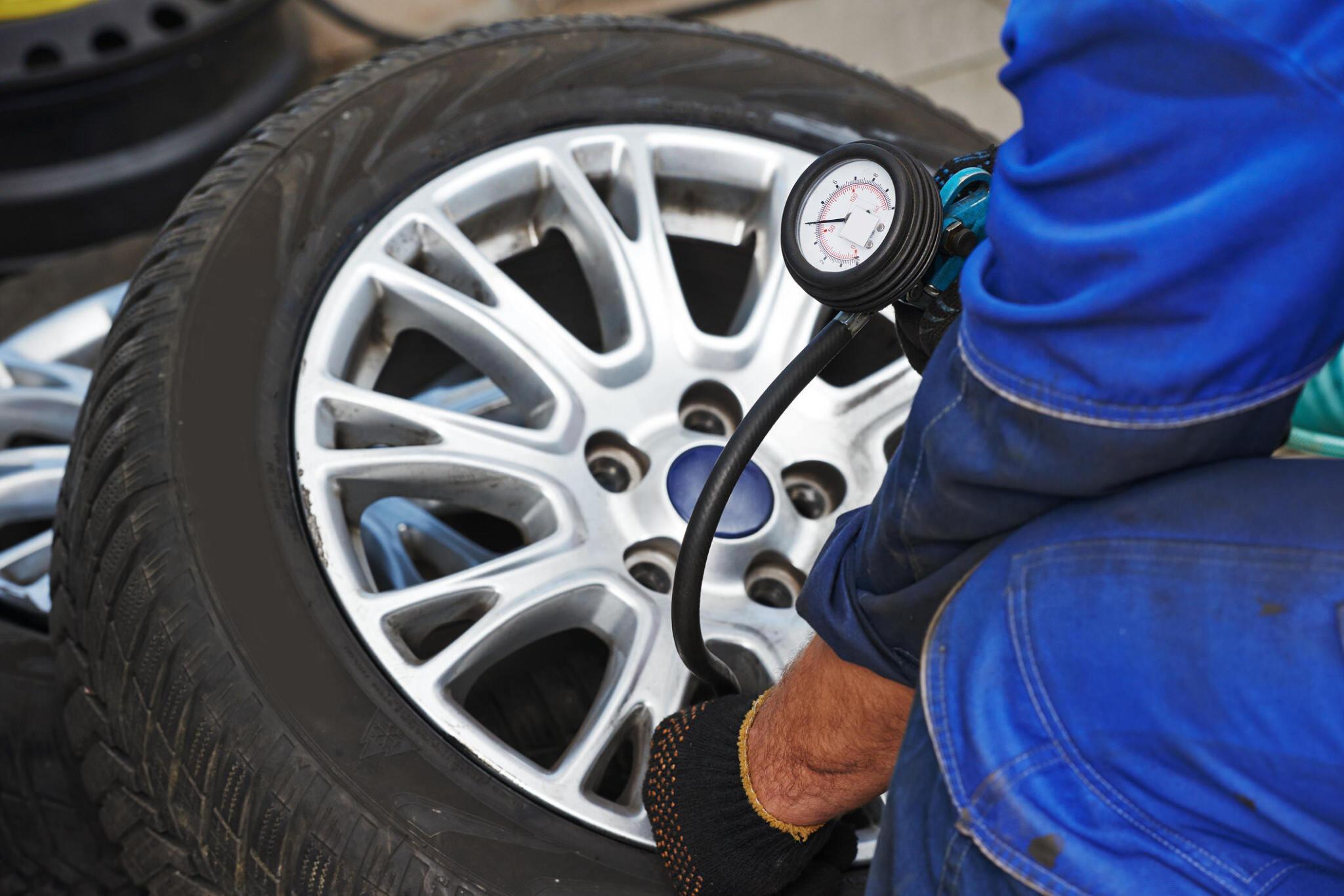
Types of Tire Pressure Monitoring Systems
Vehicles nowadays come equipped with one of three primary types of Tire Pressure Monitoring Systems (TPMS), each with its unique way of keeping an eye on your tires:
- Direct TPMS – The Inside Scoop: Imagine having a little spy inside each of your tires, keeping tabs on pressure and temperature. That’s what a direct TPMS does. It uses absolute sensors inside the tires to send information straight to your vehicle’s onboard receiver. This system is like having a direct line to each tire’s status.
- Indirect TPMS – The Clever Detective: There’s the indirect TPMS, which is more like a detective. It doesn’t use actual pressure sensors on the wheels. Instead, it cleverly utilizes the vehicle’s ABS (Anti-lock Braking System) to monitor the rotational speeds of your tires. Here’s the trick: if a tire’s pressure is off, it’ll spin at a different rate than the others. The TPMS picks up on this and lights up your dashboard. But remember, this system can be a bit sensitive – things like faulty wheel speed sensors or slippery roads can also trigger that TPMS light.
- Hybrid TPMS – The Best of Both Worlds: There’s the hybrid TPMS. It combines the best of both worlds, using internal tire and wheel speed sensors. This setup not only tells you that there’s a pressure issue but can also point out which specific tire is the troublemaker.
So, whether it’s a direct, indirect, or hybrid system, your vehicle’s TPMS is constantly on the lookout, ensuring your tires are in tip-top shape for a safer, smoother ride.
Pros and Cons of Direct Tire Pressure Monitoring Systems (TPMS)
Direct TPMS (Tire Pressure Monitoring Systems) represents an advanced approach to ensuring your tires are always at the correct pressure. Here’s a breakdown of how they work and their pros and cons:
What is Direct TPMS & How It Works
Here is how this advanced technology monitors tire pressure directly, offering real-time accuracy and enhanced vehicle safety:
- Precise Pressure Monitoring: Unlike indirect systems, direct TPMS uses sensors within each tire to monitor specific pressure levels, offering more accurate readings.
- Temperature Tracking: Some direct TPMS sensors can also measure tire temperature, adding an extra layer of safety.
- Centralized Data Analysis: The data from these sensors, including pressure and temperature, is sent wirelessly to a centralized control module for analysis.
- Unique Identification: Each sensor has a unique serial number, allowing the system to differentiate between the tires on your vehicle and others.
- Dashboard Alerts: If a tire’s pressure is too low, the system communicates this to your dashboard, illuminating an indicator light.
Advantages of Direct TPMS
The advantages include the following:
- Accurate Pressure Readings: Direct TPMS provides actual tire pressure readings inside the tire.
- Unaffected by Tire Changes: The system is not prone to inaccuracies due to tire rotations or replacements.
- Easy Resynchronization: The system can be resynchronized after tire rotations or replacements.
- Long-Lasting Batteries: The sensors’ batteries typically last about a decade.
- Spare Tire Monitoring: Some systems include monitoring the vehicle’s spare tire.
Disadvantages of Direct TPMS
While Direct TPMS offers numerous benefits, it has some downsides:
- Higher Cost: Direct TPMS systems are generally more expensive than indirect systems.
- Specialized Resynchronization Tools: Although simple, resynchronization may require costly tools.
- Non-serviceable Batteries: If the sensor battery dies, the entire sensor must be replaced.
- Complex Systems: Proprietary technology can confuse installation, service, and replacement.
- Vulnerability to Damage: The sensors can be susceptible to damage during tire mounting or demounting.
Direct TPMS offers detailed monitoring for your vehicle’s tires, combining advanced technology with practical functionality, though it comes with certain costs and maintenance considerations.
Pros and Cons of Indirect Tire Pressure Monitoring Systems (TPMS)
Exploring the world of Indirect Tire Pressure Monitoring Systems (TPMS) reveals advantages and challenges. These systems, known for their clever use of vehicle mechanics, come with their own set of pros and cons:
Advantages of Indirect TPMS:
The advantages of indirect TPMS include:
- Cost-Effectiveness: These systems are generally lighter on the wallet than direct TPMS.
- Simplified Programming and Maintenance: They require less tinkering and programming over the years than direct systems.
- Easier Installation Upkeep: Compared to direct TPMS, the maintenance related to installation is less demanding.
Disadvantages of Indirect TPMS:
The Indirect TPMS has limitations that could lead to potential inaccuracies and the lack of real-time pressure data:
- Size Matters: If you switch to larger or smaller tires, the system’s accuracy may take a hit.
- Sensitivity to Wear: The system’s reliability can diminish if the tires are worn unevenly.
- Post-Inflation Reset Needed: You must reset the system to the proper pressure when inflating your tires.
- Remember to Reset After Tire Rotation: It’s crucial to reset the system after your tires are rotated to ensure continued accuracy.
While indirect TPMS offers an economical and low-maintenance solution, it requires more attention, especially regarding tire changes and maintenance.
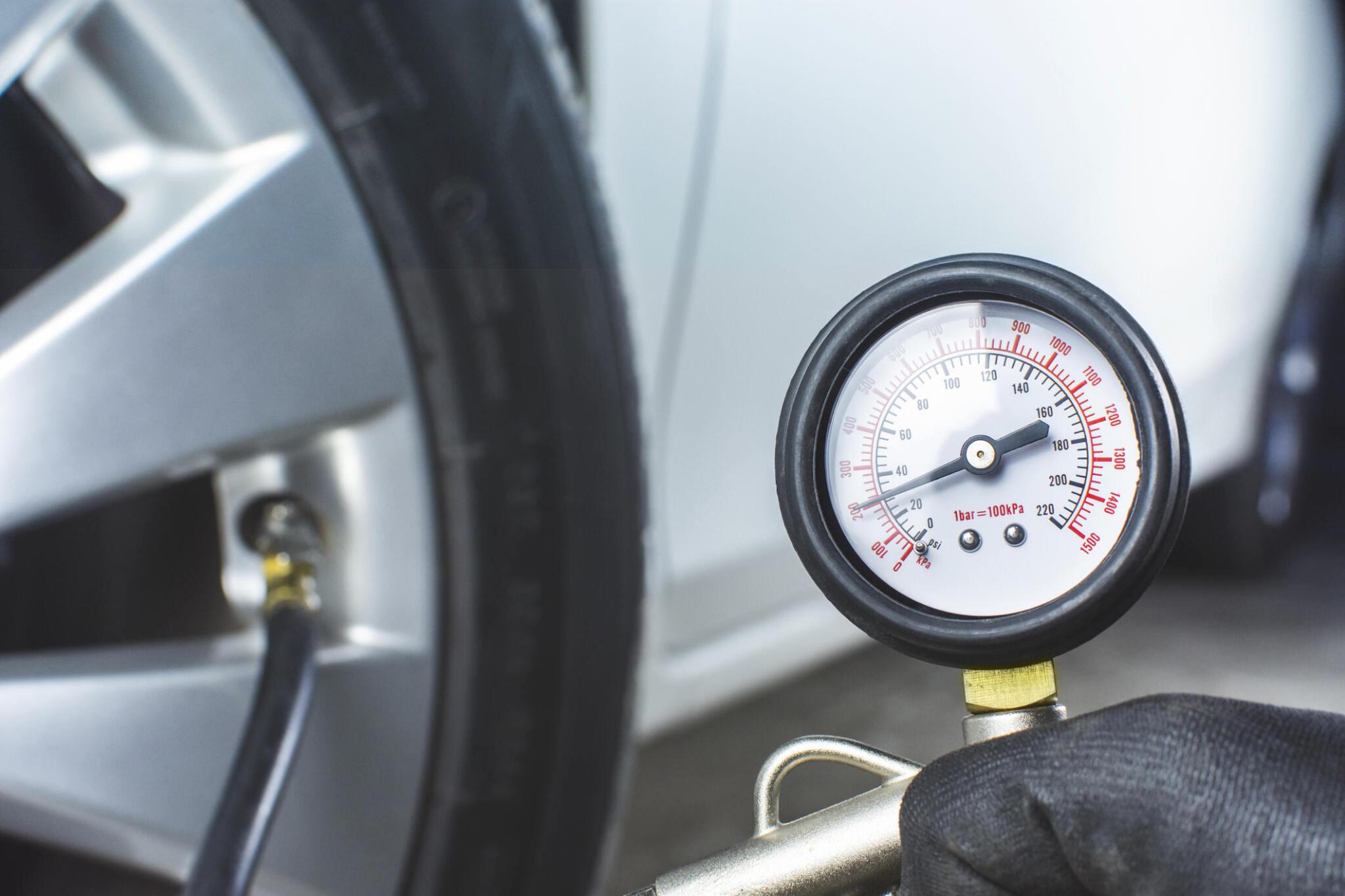
Pros and Cons of Hybrid Tire Pressure Monitoring Systems (TPMS)
Hybrid TPMS (Tire Pressure Monitoring Systems) represents a fusion of technology, marrying the strengths of both direct and indirect systems to offer a comprehensive approach to tire pressure monitoring.
This innovative system uses both internal tire sensors and wheel speed sensors, providing a detailed and accurate assessment of tire health. Here’s an exploration of the advantages and disadvantages of the hybrid TPMS:
Advantages of Hybrid TPMS
Here are the benefits of Hybrid Tire Pressure Monitoring Systems (TPMS), which integrate the strengths of both direct and indirect systems:
- Combined Technology: Integrates the accuracy of direct TPMS with the wheel speed analysis of indirect TPMS for more comprehensive tire monitoring.
- Specific Tire Identification: Can pinpoint which exact tire is experiencing issues, making it easier for drivers to address the problem.
- Enhanced Accuracy: Offers more precise tire pressure readings than solely indirect systems.
- Comprehensive Monitoring: Combines the benefits of both systems, ensuring thorough tire pressure and condition monitoring.
Disadvantages of Hybrid TPMS:
The hybrid TPMS also comes with potential drawbacks, including:
- Complexity in Design: More intricate system design can lead to higher initial costs and potential maintenance complexities.
- Potential for Mixed Signals: Using dual systems may lead to conflicting readings in specific rare scenarios.
- Maintenance Requirements: More frequent calibration and maintenance checks may be required to ensure both systems function correctly.
Hybrid TPMS stands out as a cutting-edge solution in tire pressure monitoring, blending the critical strengths of direct and indirect systems. While it offers enhanced accuracy and specific tire tracking, it also demands attention to the complexities and maintenance it brings along.
TPMS Limitations and Proper Pressure Maintenance
TPMS (Tire Pressure Monitoring Systems) are a boon for drivers, but like any technology, they have limitations. Here’s a breakdown of how TPMS works and some practical tips for tire pressure maintenance:
- TPMS Limitations: While TPMS alerts drivers when tire pressure drops by 25%, this might not be sensitive enough for early detection of all issues. For example, a tire requiring 30 psi will only alert at 22.5 psi, which might be too late to prevent accelerated wear or loss of traction.
- Real-Time vs. Basic Alerts: Some vehicles offer real-time tire pressure readings, but most have a simple TPMS warning light or message.
- Natural Pressure Loss: Tire pressure naturally decreases over time, losing up to 2 psi per month. This can be due to air permeating through the rubber and temperature changes.
- Regular Monitoring and Adjustment: To counteract natural pressure loss, it’s recommended to check tire pressure monthly or even weekly. This routine maintenance takes just about ten minutes.
- Checking Procedure: Before driving for the day and after the vehicle has been stationary for at least three hours, use a tire pressure gauge to measure each tire’s pressure. Then, compare these readings with your owner’s manual specifications or the Tire & Loading Information label on the driver’s door jamb.
- Adjusting Pressure: If the tire pressure is off, adjust it accordingly. Use a tire pressure gauge to release excess air or a tire inflator to add pressure. Remember to replace valve stem caps to keep dirt out and prevent leaks.
Following these guidelines can help you maintain optimal tire pressure, ensuring your vehicle’s safety and efficiency, even with the inherent limitations of TPMS.
The Evolution and Future Trends In TPMS Technology
The landscape of TPMS (Tire Pressure Monitoring Systems) technology is constantly evolving, bringing new advancements and improvements. Let’s explore the journey and future possibilities of TPMS:
- Mandatory Evolution: Over the past decade, TPMS has transitioned from an optional add-on to a required feature in new passenger vehicles.
- Simplified Sensor Inventory: The development of TPMS has seen a shift from a range of plug-and-play sensors to more versatile, programmable options.
- Market Coverage Expansion: Initially, it took three programmable sensors to cover the market needs. 99% of the market can now be addressed using a single SKU (Stock Keeping Unit).
- Enhanced Features: Innovations like Wireless Auto Location (WAL) and temperature readings have been incorporated, adding more functionality and value to TPMS systems.
- Diverse Design Options: There are now TPMS sensors with 90-degree and adjustable stems, various color options, and new mechanical designs that are compatible with a broader range of aftermarket wheels.
- Retrofit Kits: Recent advancements have brought about retrofit kit systems, enabling the installation of TPMS in virtually any passenger vehicle available today.
Future Innovations in TPMS: Bluetooth and Tire-Mounted Sensors
The future of Tire Pressure Monitoring Systems (TPMS) is brimming with exciting advancements. Let’s explore the major technological leaps that are set to transform TPMS capabilities and servicing:
Bluetooth Low-Frequency TPMS (BLE)
This innovative technology offers wireless convenience and real-time wireless tire pressure data through Bluetooth. It provides benefits like:
- Enhanced Safety and Performance: BLE TPMS technology is poised to elevate vehicle safety and improve the driving experience.
- Remote Diagnostics: This feature allows some issues to be addressed remotely, potentially saving drivers a trip to the service center.
- Over-the-Air Updates: Drivers can download new tire-related software updates, unlocking new features from their vehicles.
- Two-Way Communication: Unlike traditional one-way sensors, BLE TPMS offers two-way communication, enhancing cybersecurity and preventing hacking.
- Gradual Market Entry: BLE technology is expected to slowly make its way into OEM (Original Equipment Manufacturer) offerings and will take time to impact the aftermarket significantly.
Tire-Mounted Sensors (TMS)
Tire-Mounted Sensors (TMS) are known for their precision and direct measurement capabilities in maintaining tire health and safety. They are also known for the following things:
- Advanced Sensing Capabilities: Mounting sensors directly inside the tire will allow for the sensing of road conditions, tread wear, and tire load.
- Historical Challenges: Although a concept has been introduced previously, tire-mounted sensors have struggled in the aftermarket due to difficulties replacing glued-in sensors.
- Ongoing Development: OEMs continue to refine this technology, and a practical aftermarket solution for servicing TMS is anticipated.
Preparation for Auto Shops
Embracing the two future TPMS technologies mentioned above will enhance vehicle maintenance and open new avenues for automotive service providers. Here are things that auto shops should be aware of regarding TPMS:
- Stay Informed: Auto shops should stay aware of these emerging technologies and engage with industry leaders pioneering these advancements.
- Seek Knowledge and Training: As these technologies penetrate the market, auto shops must understand them and seek training.
- Opportunity for Early Adopters: Shops ready to service these new technologies are poised to benefit significantly in this evolving market.
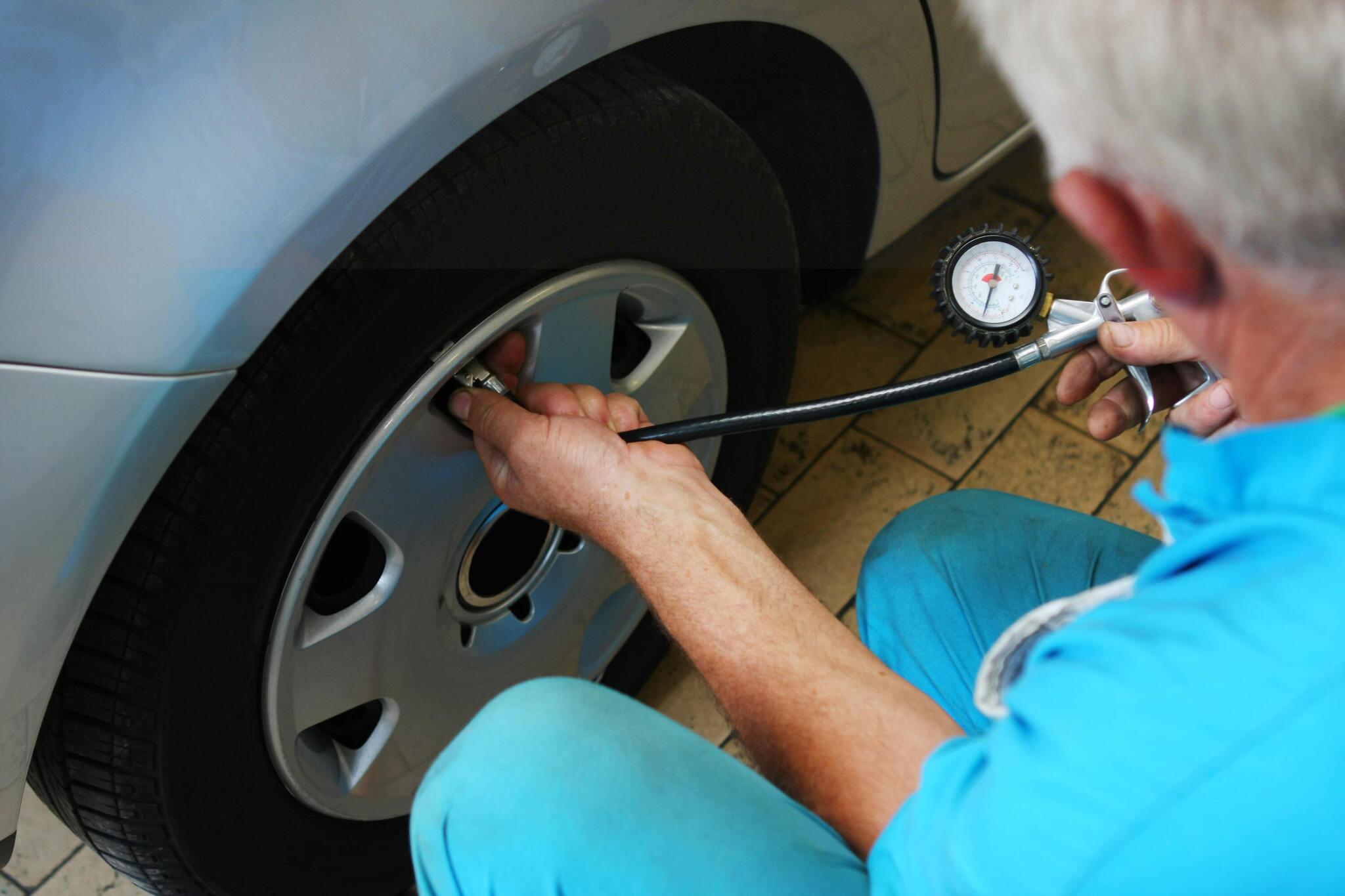
Revolutionizing Road Safety: TPMS and Telecommunications
Telecommunications has significantly reshaped how we manage and monitor tire pressure in vehicles. Let’s examine the evolutionary journey of Tire Pressure Monitoring Systems (TPMS) influenced by telecommunications technology:
Early Days: Manual Checks to First-Generation TPMS
Here is an exploration of the era of manual tire pressure checks to the advent of the first-generation Tire Pressure Monitoring Systems (TPMS), marking a significant milestone in automotive safety and technology:
- Before TPMS: Initially, drivers manually checked tire pressure, a task often neglected, leading to accidents and tire failures.
- Introduction of TPMS: The first-generation TPMS used direct pressure sensors in each tire, wirelessly transmitting data to a vehicle’s receiver and displaying real-time pressure readings.
Advancements: Second-Generation TPMS and Cellular Networks
Let’s examine the evolution of TPMS with the second-generation systems, exploring how the integration with cellular networks has enhanced real-time monitoring and data transmission capabilities for improved vehicle safety:
- Overcoming Limitations: The second-generation TPMS harnessed cellular networks, addressing the limited range of earlier sensors.
- Long-Distance Monitoring: This advancement allowed drivers to monitor tire pressure from afar, ensuring constant awareness regardless of their proximity to the vehicle.
Sophisticated Features: TPMS Meets Modern Telecommunications
Here’s how Tire Pressure Monitoring Systems have evolved to incorporate sophisticated features through modern telecommunications:
- Smartphone Integration: Modern TPMS systems can send tire pressure alerts directly to drivers’ smartphones, enabling prompt responses to prevent accidents.
- Connected Vehicle Ecosystem: The integration with telecommunications has woven TPMS into the broader connected vehicle environment, interacting with other vehicles and infrastructure for enhanced road safety.
The Future of TPMS: Embracing Advanced Technologies
The future possibilities of TPMS embrace cutting-edge technologies, envisioning a new era of automotive safety, efficiency, and connectivity in the rapidly evolving world of vehicle maintenance and monitoring. The future of TPMS also includes:
- 5G Networks: Upcoming developments include leveraging 5G technology for real-time, low-latency tire pressure data transmission.
- Greater Accuracy and Reliability: These advancements elevate TPMS’s accuracy and reliability by offering drivers the latest tire pressure information.
Telecommunications technology has been instrumental in transforming TPMS from a simple monitoring tool to an essential component of the connected vehicle landscape. As technology continues to evolve, TPMS is set to offer even more sophisticated, reliable, and driver-friendly features, contributing to safer and more efficient road travel.
Guide to TPMS: Functions and Vehicle Compatibility
Understanding the functions of TPMS and ensuring compatibility with your vehicle are essential aspects of responsible car ownership. This section explains the technical aspects of TPMS while maintaining a friendly and informative tone.
Understanding TPMS Sensors in Vehicles
Every vehicle owner should understand the following things about TPMS:
- What is TPMS? TPMS stands for Tire Pressure Monitoring System, a key feature in modern vehicles to ensure tire safety.
- Function of TPMS Sensors: These sensors keep an eye on the tire pressure for each tire. If the pressure drops by 3psi or more, the TPMS warning light on your dashboard will alert you.
- Purpose of TPMS: The primary purpose of TPMS is to inform the driver to check their tires for potential issues like punctures or splits. It’s a crucial safety feature, especially for detecting unnoticed tire damage.
- Sensor Readings Variability: TPMS sensor readings can vary, especially after long drives, as tire pressure naturally fluctuates with heat.
Identifying TPMS in Your Vehicle
Here is how to identify the presence and type of TPMS in your vehicle:
- TPMS in U.S. Vehicles: In the U.S., vehicles under 10,000 lbs manufactured post-September 1, 2007, are equipped with TPMS. Models manufactured after October 5, 2005, might also have TPMS.
- TPMS in Luxury Cars: Before these dates, TPMS was often a premium feature in higher-end vehicles.
- TREAD Act of 2000: This U.S. federal mandate required TPMS in all new vehicles, rolled out in phases – 20% from October 5, 2005, to August 31, 2006, 70% from September 1, 2006, to August 31, 2007, and 100% from September 1, 2007.
- How to Check for TPMS: The most straightforward ways to check for TPMS include consulting your vehicle’s owner’s manual and observing the dashboard when you start the car. Look for a TPMS symbol (often resembling a tire with an exclamation mark) when turning the ignition to the “ON” or “AUX” position.
Mastering TPMS Diagnostics
In TPMS diagnostics, the mantra of “test before you touch” is a guiding principle that service experts emphasize. If you want to start working on TPMS, this is the first thing you must do. Before doing anything else, you must use a TPMS tool to activate and check the response signals from each tire pressure sensor in each wheel. This critical step is essential for two main reasons:
- Sensor Capability: Using the TPMS tool, you can determine whether each sensor can generate a signal. This initial check ensures that the sensors are in working order.
- Pressure Accuracy: If a sensor is indeed generating a signal, the next step is to assess the accuracy of the pressure reading it provides. This reading can be cross-verified by measuring the tire pressure with a gauge. If the TPMS tool displays a specific inflation pressure (in psi or bar), you should find a matching value when checking with a meter.
When performing this diagnostic procedure, it’s necessary to use an accurate tire pressure gauge. While traditional spring-loaded stick-style gauges can sometimes exhibit variations of up to 5 psi or more, digital gauges are favored for their precision. Many digital gauges have self-calibrating capabilities that are responsible for ambient air temperature changes, further enhancing their accuracy.
Watch for potential issues like corroded or damaged TPMS valves during the diagnostic process. Inspect the valve stems on each wheel for signs of corrosion or damage that could compromise their integrity.
Specific vehicle makes and models have gained notoriety for experiencing excessive decline, sometimes leading to valve-stem sensors detaching and causing rapid deflation.
Lastly, consider the age and mileage of the vehicle as part of your diagnosis. Factory TPMS sensors typically have a battery lifespan of around seven years, depending on usage.
Vehicles driven extensively may have TPMS sensors that generate signals more frequently, potentially depleting their battery life more rapidly. These factors should be factored into your comprehensive TPMS diagnostic strategy.
Effective TPMS Diagnostic Strategy: Troubleshooting and Solutions
Tire Pressure Monitoring Systems (TPMS) are valuable safety features in modern vehicles, but occasional issues may impact their effectiveness. A systematic diagnostic strategy is essential to identify and address TPMS problems promptly. Here’s how you can carry out an effective diagnosis:
- Identify Faulty Sensors: If you encounter a tire pressure sensor not functioning correctly or providing accurate readings, the first instinct may be to replace it, which often resolves the issue.
- System-Wide Check: However, before assuming that a bad sensor is the sole problem, it’s essential to check the entire TPMS system to ensure no other issues are affecting its operation.
- Persistent Warning Light: If all sensors appear to be working correctly and tire pressures are at the recommended levels. Still, the TPMS warning light remains on or flashing. Further investigation is necessary.
- Use TPMS Tool: To proceed, you’ll need a TPMS tool or scan tool capable of communicating with the TPMS system via the OBD II diagnostic connector under the instrument panel.
- Read Fault Codes: After connecting the tool, read any fault codes detected and note them for reference.
- Possible Sensor Issues: You may find fault codes related to one or more lousy tire pressure sensors if no signal is received from them.
- Check Sensors: However, if you’ve verified the sensors individually and found no problems, the issue lies elsewhere, such as with the sensor signal transmission.
- Inspect Antenna and Wiring: Check the antenna wiring for continuity and potential issues like shorts, opens, or high resistance. A voltage drop test across wiring connections should ideally read 0.10 volts or less. Higher readings indicate excessive resistance affecting signal quality.
- TPMS Module Assessment: If the antenna wiring checks out, but the TPMS module continues to generate a “no sensor signal” code, the problem may be within the module itself. Before condemning the module, verify the TPMS module voltage supply and ground connections, as low voltage can cause electronic modules to behave erratically.
- Consider Keyless Entry: On certain vehicles, signals to the TPMS module are shared or passed through the keyless entry system. Wiring issues affecting the keyless entry system might also impact TPMS functionality. Always consult OE service information to understand how the TPMS operates, especially when troubleshooting complex problems.
- Watch for Electromagnetic Interference (EMI): Pay attention to the possibility of electromagnetic interference (EMI) from external sources like adjacent wiring circuits, which can disrupt TPMS signals and lead to malfunctions or false codes.
- Thorough Diagnostic Strategy: Adopting a step-by-step approach, conducting a comprehensive inspection, and deeply understanding the TPMS system are essential to your diagnostic strategy. Ensure that you’ve covered all the bases in your troubleshooting process.
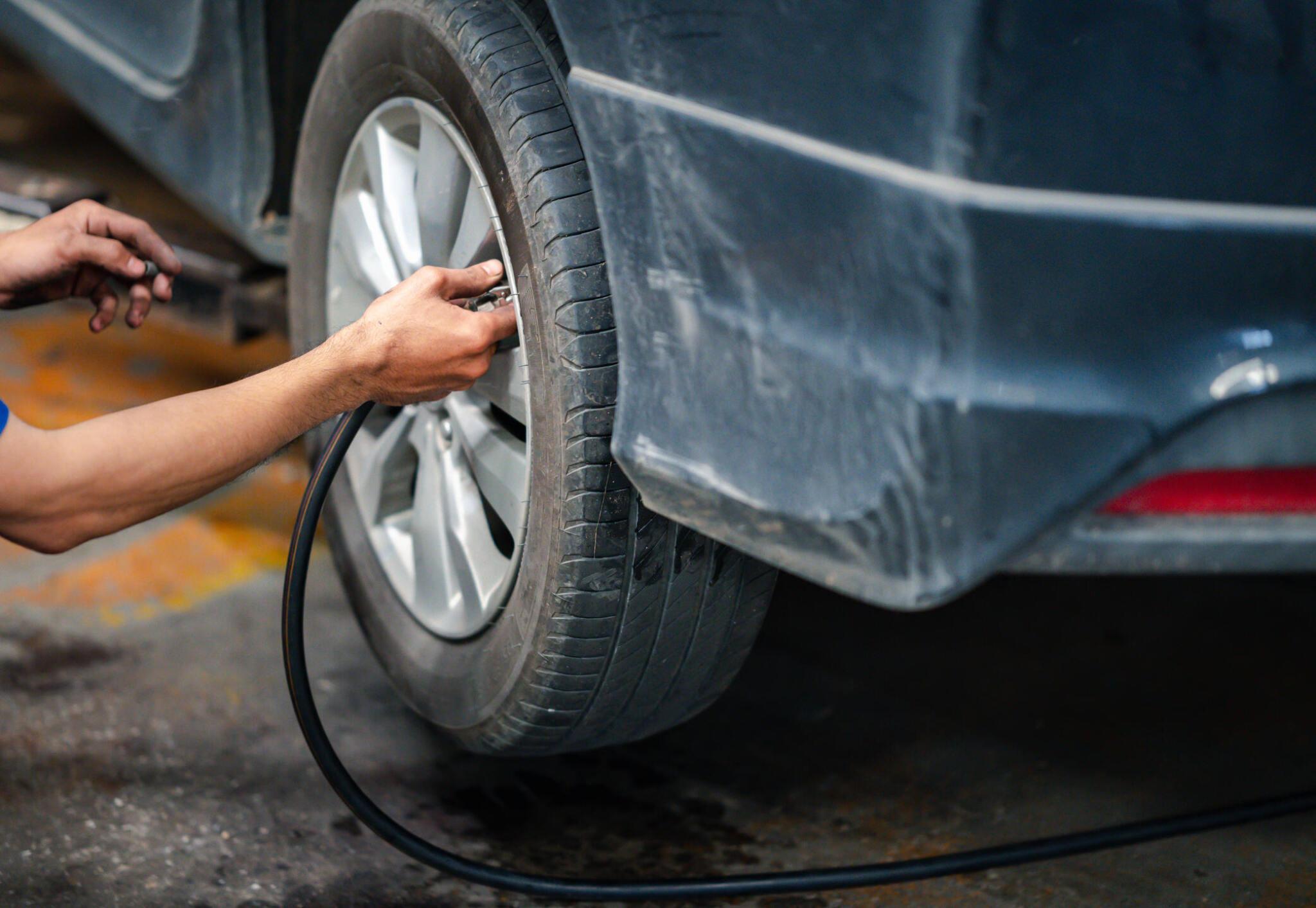
Understanding Common TPMS Sensor Issues
Like any technology, TPMS sensors can face issues that require attention. To keep your TPMS in top condition, here are some things to look out for:
- Battery Issues: A faulty TPMS sensor can sometimes be attributed to the vehicle’s battery. If your vehicle’s battery is older or has not been used for an extended period, it may lead to sensor problems. Sensors rely on battery power to function correctly, and this issue is more prevalent in vehicles with frequent stop-and-go driving, especially in warmer climates or for vehicles like delivery trucks navigating city traffic or construction sites.
- Sensor Malfunction: TPMS sensors are designed to trigger a warning light when they detect low air pressure in tires. However, there are instances where the alerts are incorrect due to sensor malfunction. If you’ve confirmed that the air pressure in all tires is within the manufacturer’s recommended range, it’s advisable to have the TPMS system inspected for sensor issues.
- Handling Concerns: If you experience significant changes in your vehicle’s handling on the road, it may be a sign that your TPMS sensor needs replacement. Even slight tire deflation should be detected by the sensor, and failure to do so can increase the risk of a flat tire or unstable driving conditions. Regularly check your tire pressure during stops and consider roadside assistance if needed.
- Fuel Economy Changes: Another indicator of TPMS sensor problems is noticeable changes in fuel economy. A malfunctioning or non-functioning sensor may fail to detect flat or deflated tires, resulting in increased friction between the tires and the road surface. This increased friction leads to greater fuel consumption. If you observe significant changes in fuel efficiency, addressing the TPMS sensor’s condition is essential.
- Recent Tire Replacement: In some cases, the TPMS light may illuminate shortly after a tire replacement. This can occur due to faulty tire replacement, sensor damage during the replacement process, or the need for a sensor reset. If you’ve recently had your truck’s tires changed and the TPMS light comes on, it’s essential to investigate the cause and ensure proper sensor function.
Maintaining a functional TPMS sensor is necessary for road safety and tire performance. Addressing these common signs of sensor issues promptly can help prevent accidents and ensure a smoother driving experience.
Identifying Signs of a Malfunctioning TPMS Sensor
TPMS sensors can encounter issues over time, like any electronic device. Recognizing the signs of a faulty TPMS sensor is essential for maintaining your vehicle’s safety and performance. We’ll look at some common symptoms that indicate a malfunctioning TPMS sensor, allowing you to take timely action and ensure your tires remain in top shape.
Symptoms of a Faulty TPMS Sensor
When a TPMS sensor goes wrong, it can manifest in several ways, impacting your driving experience and security. Here are the common symptoms to watch out for:
TPMS Warning Light
The most noticeable sign of a malfunctioning TPMS sensor is the illuminated TPMS warning light on your dashboard. This indicator serves as an early warning system for tire issues. When it lights up, it’s essential to address the problem promptly.
Low Air Pressure in the Tires
A functioning TPMS sensor should alert you when your tire’s air pressure is low. If you observe that your tires appear flat or you struggle with vehicle handling, it could indicate a failed or malfunctioning sensor. To ensure accurate assessments, it’s crucial to have your sensor checked by a certified mechanic and use a Tire Pressure Gauge to monitor tire pressure.
TPMS Light Illumination
Your vehicle’s Electronic Control Unit (ECU) or Powertrain Control Module (PCM) receives data from all the sensors, including the TPMS sensor. If the sensor isn’t operating within the expected parameters, the ECU triggers the TPMS warning light on your dashboard. Consulting a mechanic to diagnose the root cause of the TPMS symbol is advisable. You may also receive a message like “Tire pressure sensor fault” on your dashboard.
Incorrect Warnings
A malfunctioning TPMS sensor may trigger incorrect Driver Information Center (DIC) warnings. For instance, it might falsely indicate that you have a flat tire when the tire is excellent.
It could also display low tire pressure warnings even if you recently inflated the tires to the recommended pressure. While these warnings can be misleading, it’s essential not to ignore them, as they may lead to future tire-related issues. Always take prompt action when you encounter such warnings.
Conclusion & Recommendations
In conclusion, detecting the presence of TPMS sensors in your vehicle is crucial for maintaining tire health and ensuring your safety on the road. By referring to your vehicle’s manual, checking the dashboard, inspecting valve stems, using a TPMS tool, or consulting a mechanic, you can determine whether your car is equipped with TPMS sensors.
If your vehicle has TPMS sensors, staying proactive about tire maintenance is essential. Regularly check your tire pressure, promptly respond to TPMS alerts, and replace faulty sensors to ensure optimal safety and performance.
Ready to Ensure Your Tire Health? Get Started with Giga Tires!
At Giga Tires, we understand the importance of tire health and safety. If your TPMS sensors indicate any tire issues, it’s time to consider replacement. We offer a wide selection of high-quality tires to meet your specific needs. Don’t compromise on safety—browse our tire collection and make a smooth transition to buy tires from Giga Tires today!
Ensure your safety on the road with Giga Tires’ top-notch tire solutions.
FAQs
What Lies Ahead for TPMS in the Future?
TPMS is poised for continuous advancement, with future innovations likely to focus on enhanced sensor accuracy and integration with vehicle-to-infrastructure systems for safer and more efficient driving.
What Objectives Does TPMS Aim to Achieve?
TPMS primarily aims to enhance road safety by providing real-time tire pressure information to drivers, reducing the risk of accidents, and promoting fuel efficiency.
What Are the Key Advantages Offered by TPMS?
TPMS provides improved safety, extended tire life, better fuel economy, and reduced environmental impact by ensuring optimal tire pressure.
What Features Define TPMS Sensors?
TPMS sensors typically include pressure and temperature monitoring capabilities, wireless communication, and compatibility with various vehicle types.
How Are TPMS Utilized in Automotive Applications?
TPMS is integrated into vehicles to continuously monitor tire pressure and provide alerts to drivers in case of underinflation, contributing to safer and more efficient driving.
How Can You Determine the Presence of TPMS?
You can identify the presence of TPMS in your vehicle by checking for the TPMS warning light on your dashboard or referring to your vehicle’s owner’s manual.
What Does a TPMS Sensor Detect?
TPMS sensors detect tire pressure and temperature, providing critical data to ensure safe driving conditions.
What Parameters Does a TPMS Sensor Measure in a Vehicle?
TPMS sensors measure tire pressure and temperature, essential for safe and efficient driving.
Defining TPMS: Its Purpose and Functionality
TPMS, or Tire Pressure Monitoring System, continuously monitors tire pressure to enhance road safety and vehicle efficiency.
Is DIY Tire Replacement Possible in the Future?
While DIY tire replacement may remain an option, future vehicles with advanced TPMS may require specialized tools and knowledge for safe and accurate tire changes.
How Is Compliance with TPMS Regulations Monitored?
Compliance with TPMS regulations is monitored through vehicle inspections, and failure to meet these requirements may result in penalties or restrictions on vehicle operation.









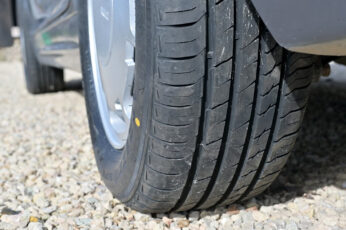



 Français
Français Español
Español